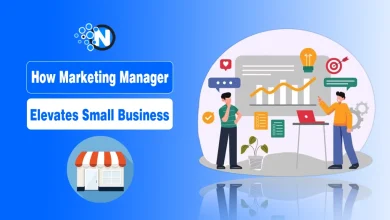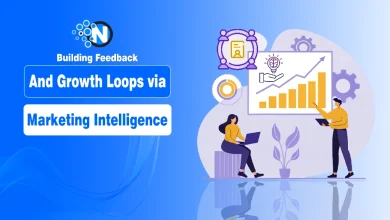The Future of Digital Advertising: Trends You Can’t Afford to Ignore

If you are a marketer, then you may have experienced that you launched a campaign, but you came to know that it flopped, and you didn’t get the desired results. The primary reason behind it is the unawareness of modern trends that grab the maximum audience.
In this modern world, digital advertising is completely revolutionizing, as are other tech domains, and you can’t ignore them if you want to survive in the competitive market. Digital advertising trends are evolving faster than ever, driven by AI, privacy shifts, and consumer demands for authenticity. With global spend topping billions, ignoring these changes means getting left behind.
Now the main issue is that most of the users don’t even know what the trends they have to follow up on are.
In this blog post, I will discuss the future of digital advertising, and this will include all of the trends you can’t afford to ignore.

Why These Digital Advertising Trends Matter?
Digital ad spend is exploding past $710 billion worldwide. Brands that adapt to these shifts dominate while others destroy their budget. You may have seen competitors cling to old tactics and lose market share in a single quarter.
The platforms themselves are changing, such as Google, Meta, and TikTok are all pushing new formats, new rules, and new ways to reach audiences. If you’re still running old-style banner ads, you’re basically invisible.
Attention Is the New Currency
The average human attention span has dropped to a maximum of 8 seconds. And to stand out with your campaign, you need to create a digital ad design that grabs attention instantly.
Mobile-first experiences now capture more than half of web traffic, and if you ignore it, then you’re invisible. People scroll at lightning speed, so your ad has one chance to stop the thumb.
Privacy Is the New Battleground
With third-party cookies dying and GDPR fines hitting millions, privacy-first advertising isn’t optional. You should be aware that brands lose a significant ratio of retargeting reach overnight, and those who pivoted to first-party data thrived. Consumers now expect transparency and control. If you mess it up, they’ll block you forever.
Mobile Marketing Trends: The Smartphone Revolution
With 97% smartphone ownership in the US, Google’s mobile-first indexing means your desktop site doesn’t matter anymore.
You have to keep in mind that if you are featuring slow loads, tiny text, or a non-responsive design, then you’re penalized. You should have redesigned the funnel for mobile conversion.
Geofencing and Beacons: Hyper-Local Magic
Geofencing creates virtual boundaries for targeted alerts. This is just like when you walk near a store and get an instant discount. Beacons auto-check-in for loyalty perks.
If you work on it efficiently, then you will observe a retail foot traffic rise with geofencing, and timely, relevant nudges convert browsers to buyers.
App-Centric Marketing: Where Attention Actually Lives
Mobile apps drive retention with push notifications and in-app promos. YouTube’s trackers personalize feeds; time spent on apps has surged.
You can opt for used app-exclusive deals, downloads, and loyalty deepened. If I tell you about the future predictions, then voice commerce through Alexa conversational queries like “order my usual” streamlines sales.
AI in Digital Advertising: Your New Creative Partner
Now I’ll mention some of the strategies involving the use of AI in digital advertising as your new creative partner:
Hyper-Personalization at Scale
AI enables real-time, contextual experiences. It gives you an edge that you can push notifications for discounts based on past buys, or ads that adapt to location.
A significant amount of conversion lifts from relevance. I have personally A/B tested AI-personalized emails that help in open rates.
Generative AI: From Copy to Creative in Seconds
AI generates posts and analyzes data in minutes. Brands train models on their voice for authentic output. AI for ad optimization, faster strategies aligning with expectations.
You can use AI to draft ad variants, and then you can start testing top performers, and you have to opt for the one with CTR. AI co-pilots for real-time campaign tweaks.
Predictive Analytics: Knowing What They Want Before They Do
AI processes maximum data points per user for hyper-relevant ads. Opt for running predictive campaigns that anticipate purchases, ROAS should be high in ratio.
The system learns from behaviour, weather, and even the time of day. You can imagine, such as one client’s coffee brand pushed “It’s raining warm up with 20% off lattes” at 7 AM, and then both you and I can imagine how the sales jump to the roof.
Video Marketing: The King of Engagement
Here are the video marketing strategies that you cannot ignore to be in the advertising domain:
Short-Form Video Dominance
Video dominates, with the maximum traffic, because it becomes attractive to most eyes. Short-form content that you post on TikTok or Instagram suits micro-attention (under 10 seconds).
You should opt for running a maximum of 15-second hooks that will show completion rates in a considerable number. The algorithm rewards watch time; more extended retention = more reach.
Shoppable and Live Commerce Explosion
Live shopping events enable real-time buys. Shoppable videos let users click on outfits to purchase. 75% watch muted captions essential.
I have personally designed and used reels with shoppable tags, and you will be amazed to know that it helped me boost my clients’ sales. Live Q&A builds trust, you should host product launches, conversion higher.
Immersive 360 and VR Experiences
VR ads create experiences. Nike’s.SWOOSH metaverse drops engage deeply. Three hundred sixty videos let users explore that you have used them for virtual tours, with dwell time up 50%.
Keep in mind that Video content with integrated commerce is exploding, blending entertainment and sales.
Privacy and Data Strategies: Trust in the Post-Cookie Era
Privacy reforms such as GDPR and cookie phase-out demand consent-based data. Don’t forget that zero-party data from quizzes/surveys has great importance.
So you should opt for used quizzes for preferences data quality up. Customers happily share when they get value.
Contextual Targeting Comeback
Without cookies, context matters. 75% of the audience nowadays watches mobile videos with muted captions boosts accessibility.
I have suggested to my clients to get shifted to shift to contextual ads—performance matched cookies 90%. Place ads next to relevant content, not creepy tracking.
Blockchain for Transparent Advertising
Web3 flips traditional models. NFTs for lifetime discounts, crypto rewards for engagement. You can choose to go for experiment with blockchain verification that will help you to decrease fraud. Transparent spend builds trust.
Final Thoughts
In the modern digital landscape, the ability to succeed in the advertising industry is dependent on the capacity to adjust to the current trends. This includes artificial intelligence (AI), customization, mobile-first, and data privacy.
To make your brand build and your efforts pay off, it is necessary to have innovation and use the data in a wise manner and make real experiences. Adopting a proactive stance is the only way to stay ahead rather than to react to such trends as short-form video, predictive analytics, and blockchain transparency.
Being a progressive marketer, you will stand out because of your readiness to change and make your message appealing to the new generations.




